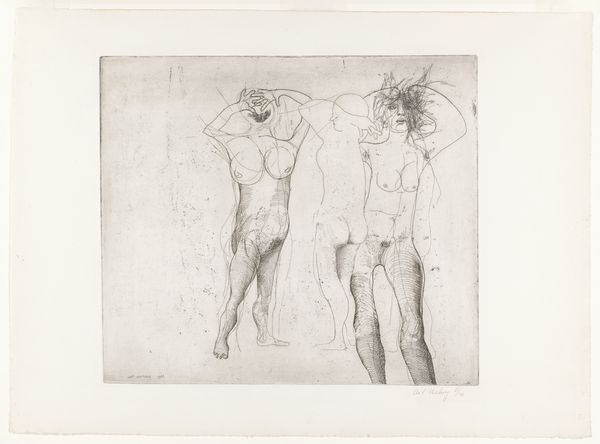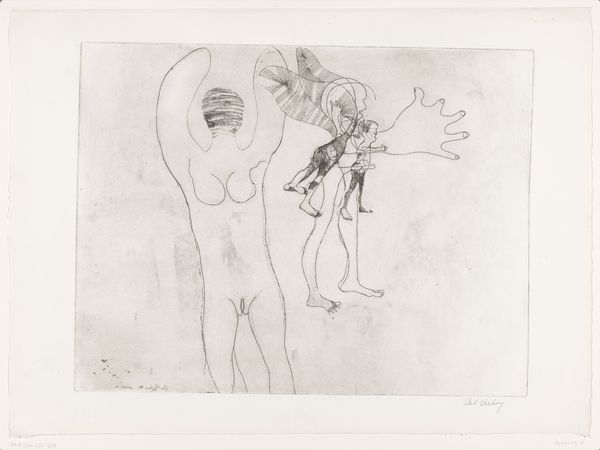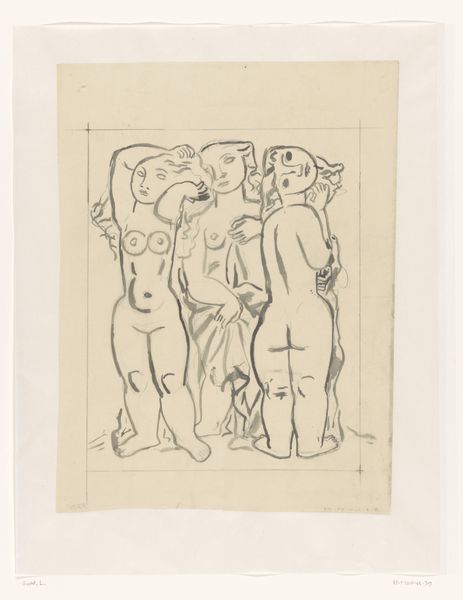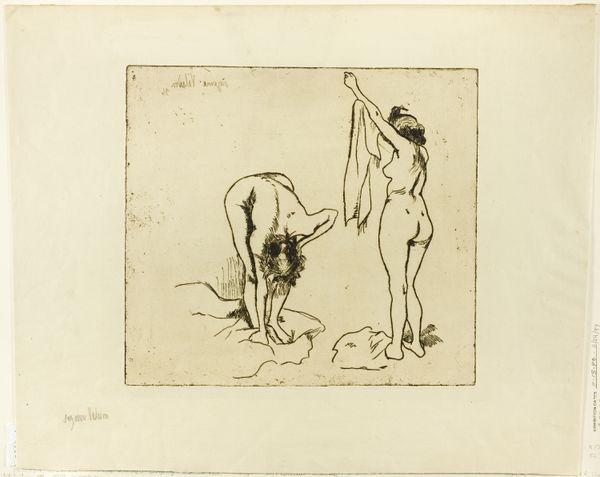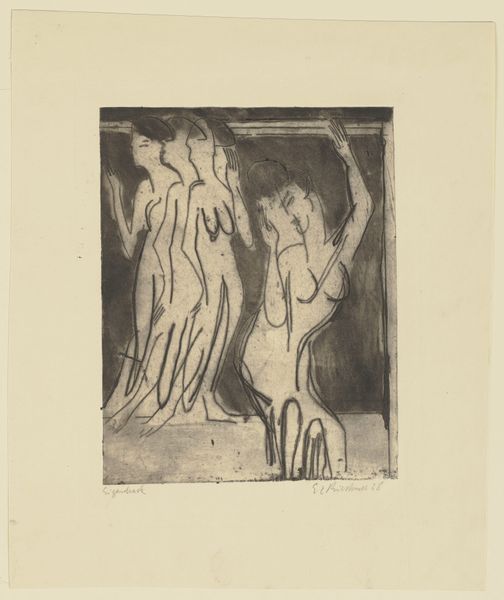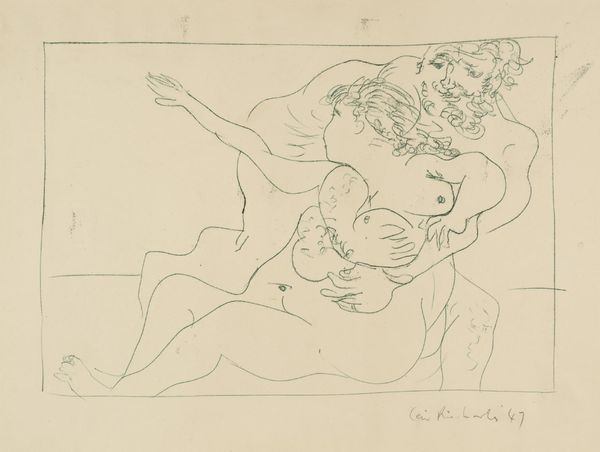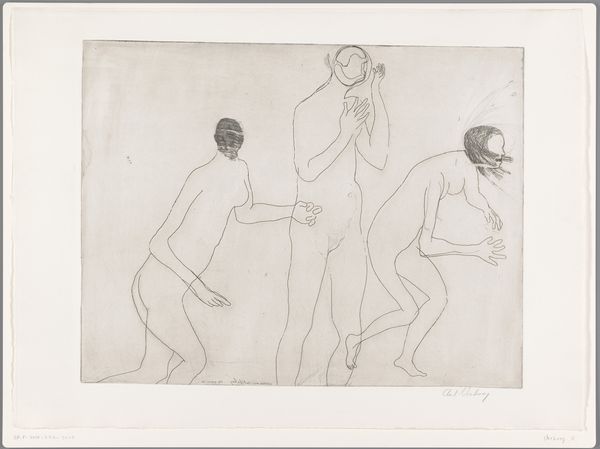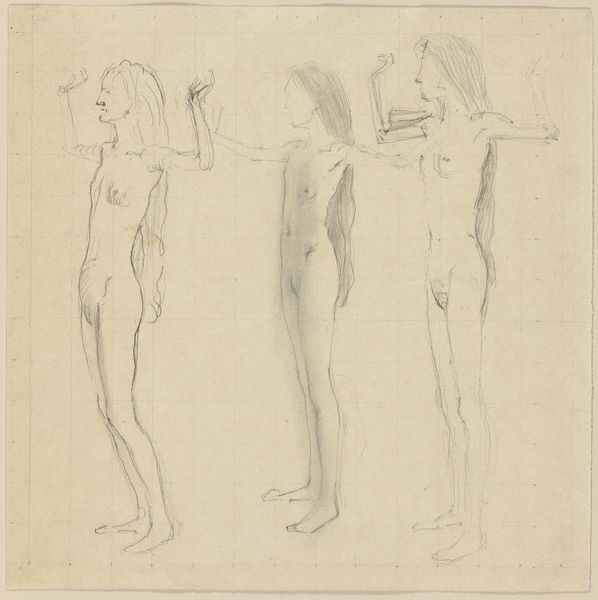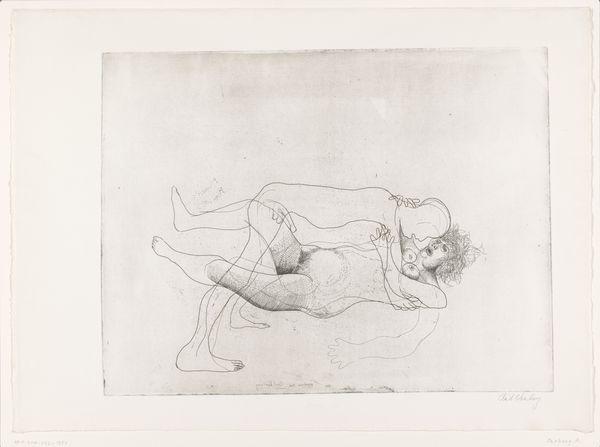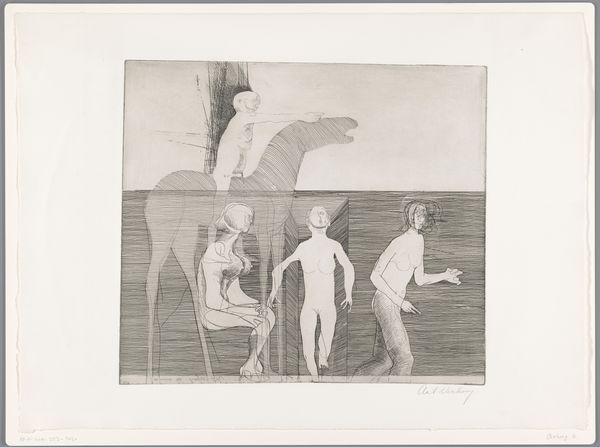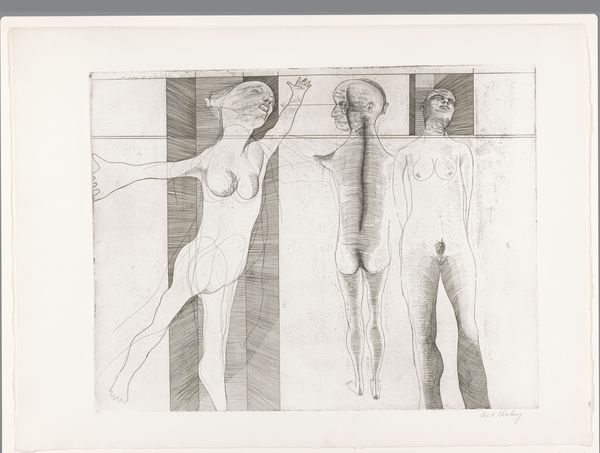
print, etching
# print
#
etching
#
figuration
#
nude
Dimensions: height 563 mm, width 764 mm, height 430 mm, width 490 mm
Copyright: Rijks Museum: Open Domain
Editor: Here we have Aat Verhoog's "Drie naakten met opgeheven armen," created between 1966 and 1979. It's an etching, and there's a nervous energy to the lines. They give the figures a certain rawness. What do you see in this piece? Curator: I see a powerful statement about vulnerability and visibility. The raised arms could symbolize surrender, but equally resistance. Consider the period, the late 60s and 70s. How do these nude figures, likely informed by feminist perspectives emerging at the time, challenge conventional representations of the female form? Editor: The composition, with the three figures, feels almost confrontational. But there's a mix of vulnerability and what you said – resistance. What kind of conversation do you think the artist wanted to start? Curator: Verhoog might be pushing us to consider the objectification of women in art and broader culture, prompting us to confront our own gazes and the power dynamics inherent in looking. What impact do the graphic, raw lines of the etching technique have on how you perceive the subjects? Editor: They definitely disrupt any sense of idealized beauty. It feels like the artist is rejecting traditional portrayals. It's as if they're claiming ownership of their own representation. Curator: Exactly! By refusing to smooth over the perceived imperfections, Verhoog challenges conventional beauty standards, making the viewer actively question ingrained patriarchal norms in art history and broader society. Ultimately, the artwork uses that approach to liberate the female body. Editor: I never thought of it that way before, viewing art as an invitation to critique norms and reclaim narratives. Curator: It's a continuous process. Art becomes an entry point into deeper conversations. I think this piece invites continued re-evaluation.
Comments
No comments
Be the first to comment and join the conversation on the ultimate creative platform.
